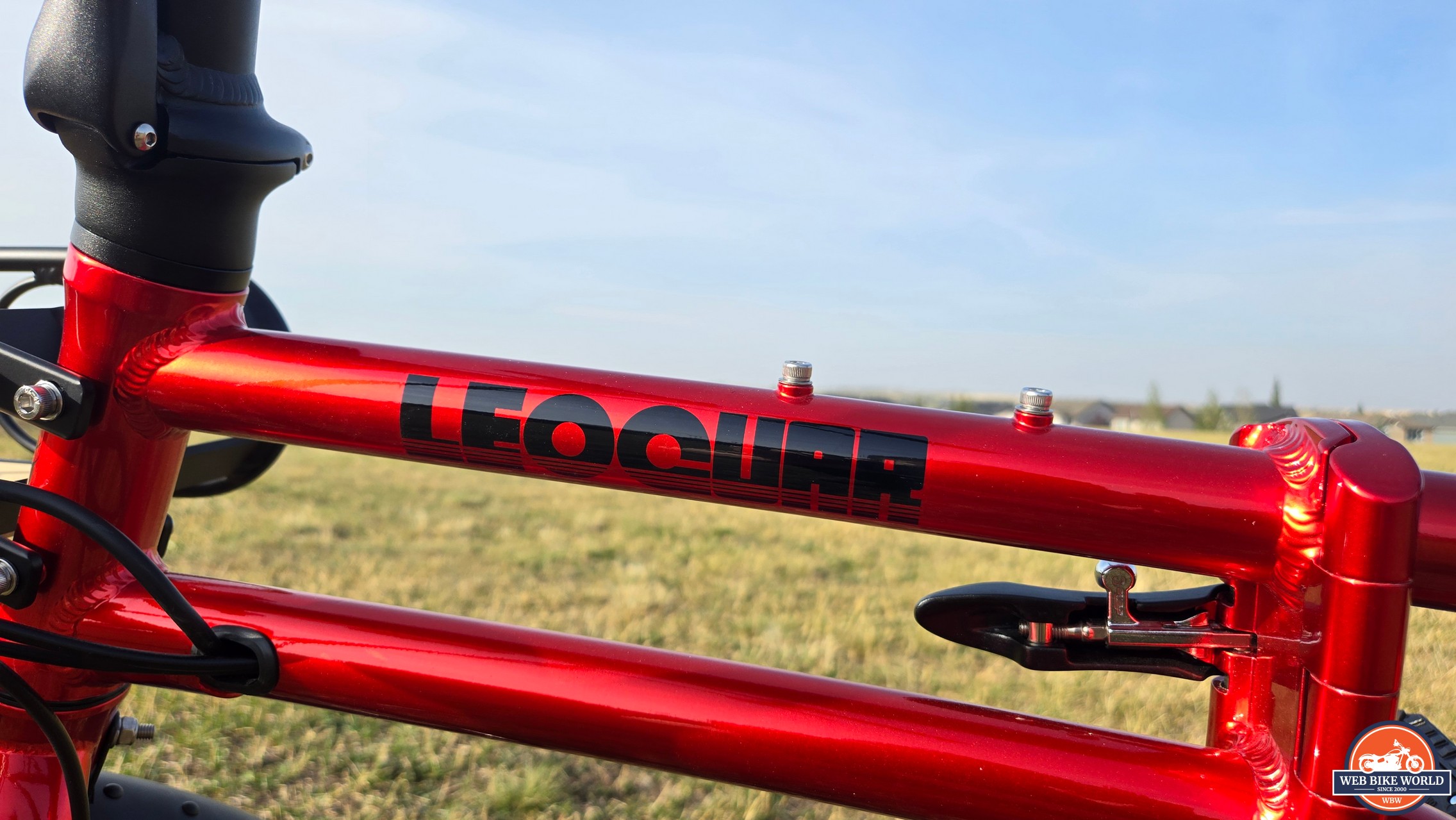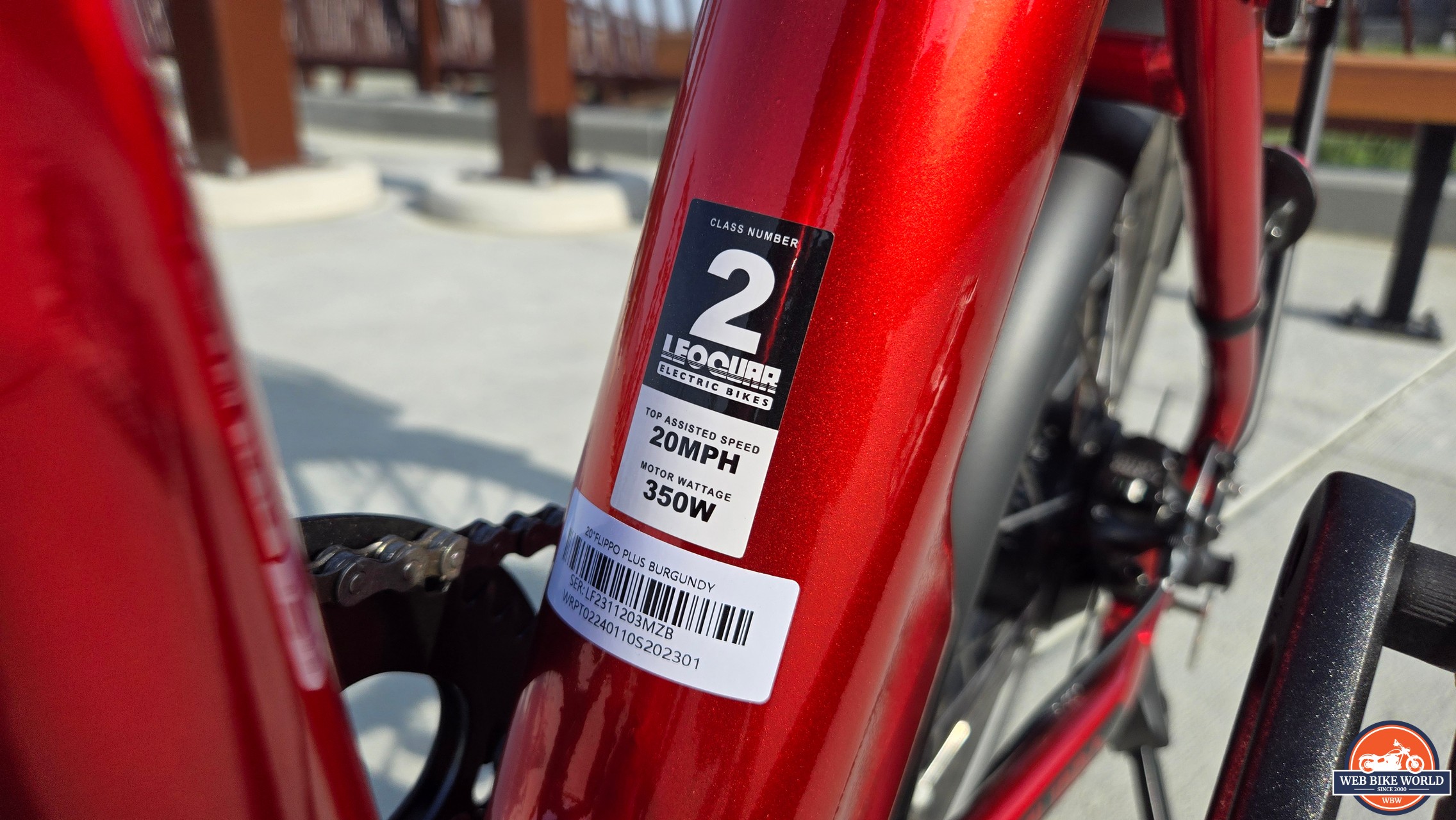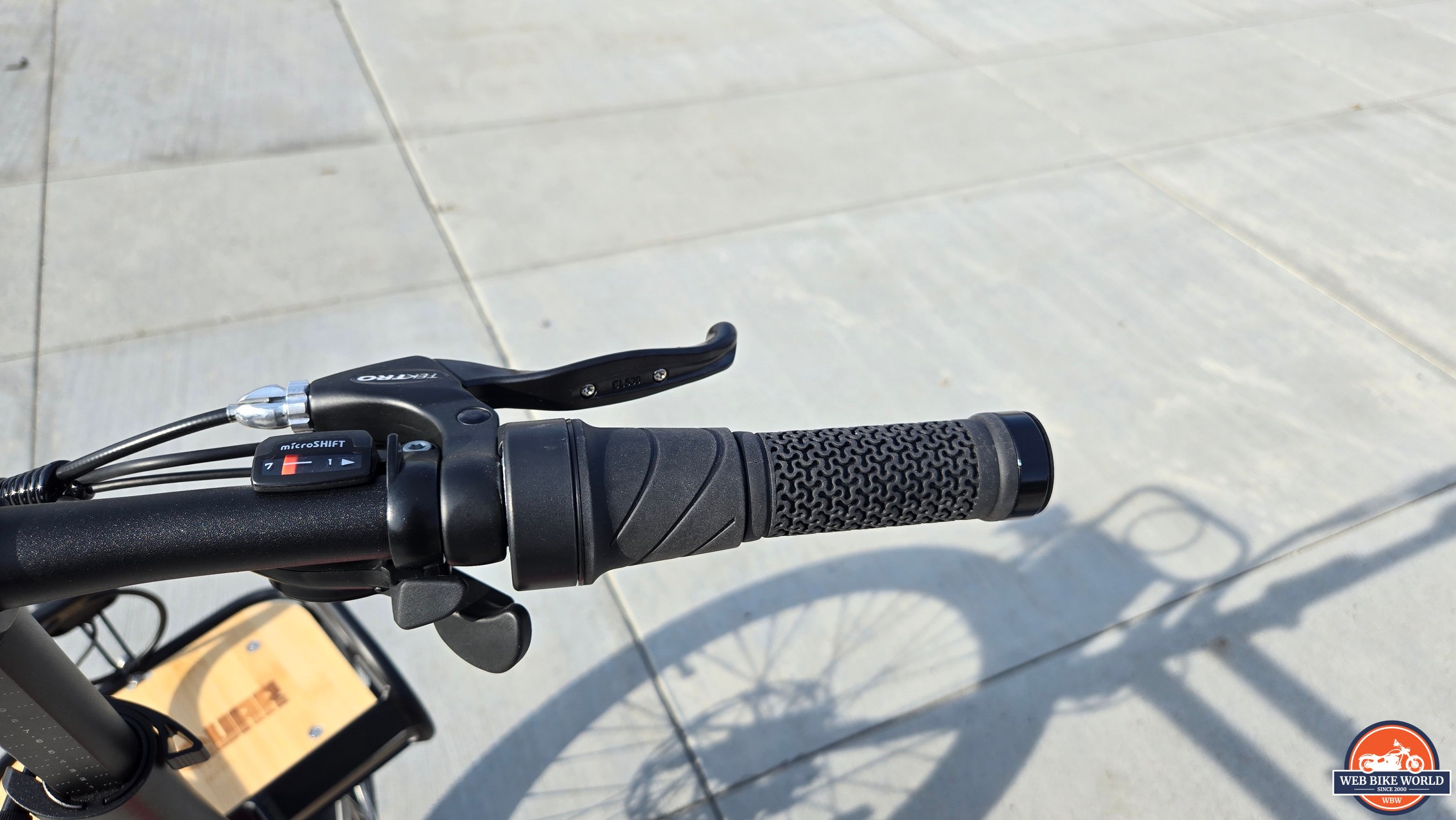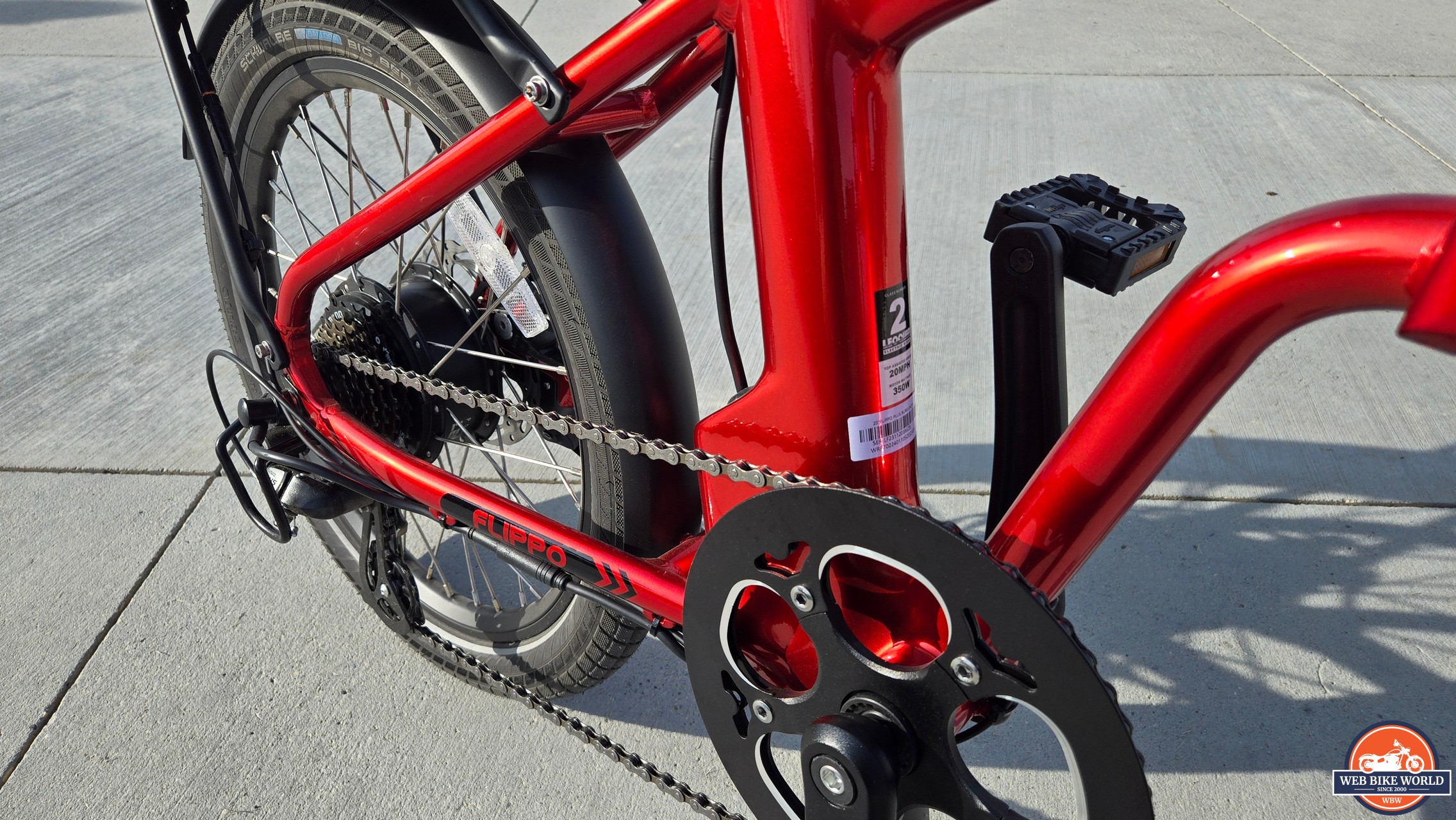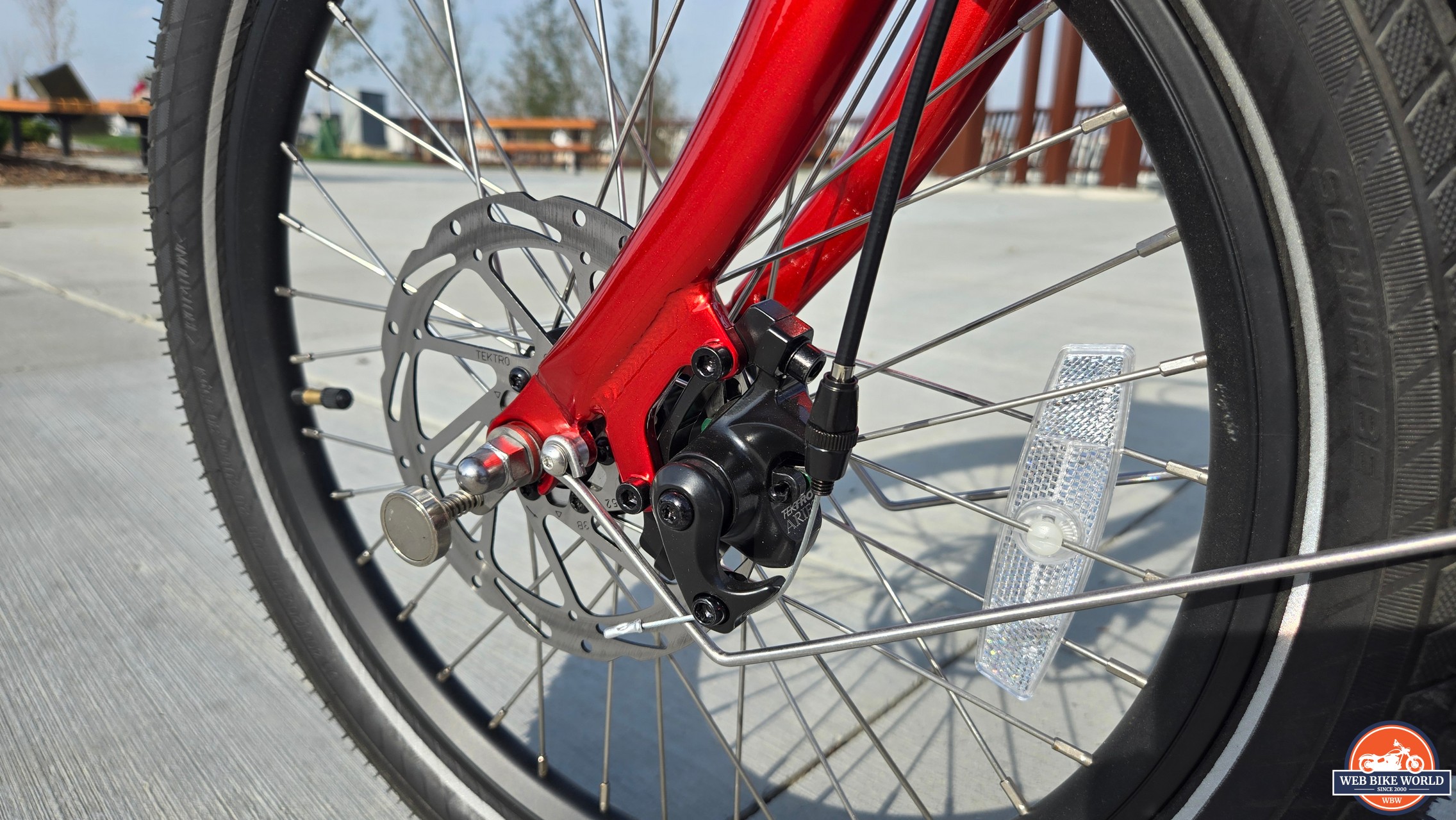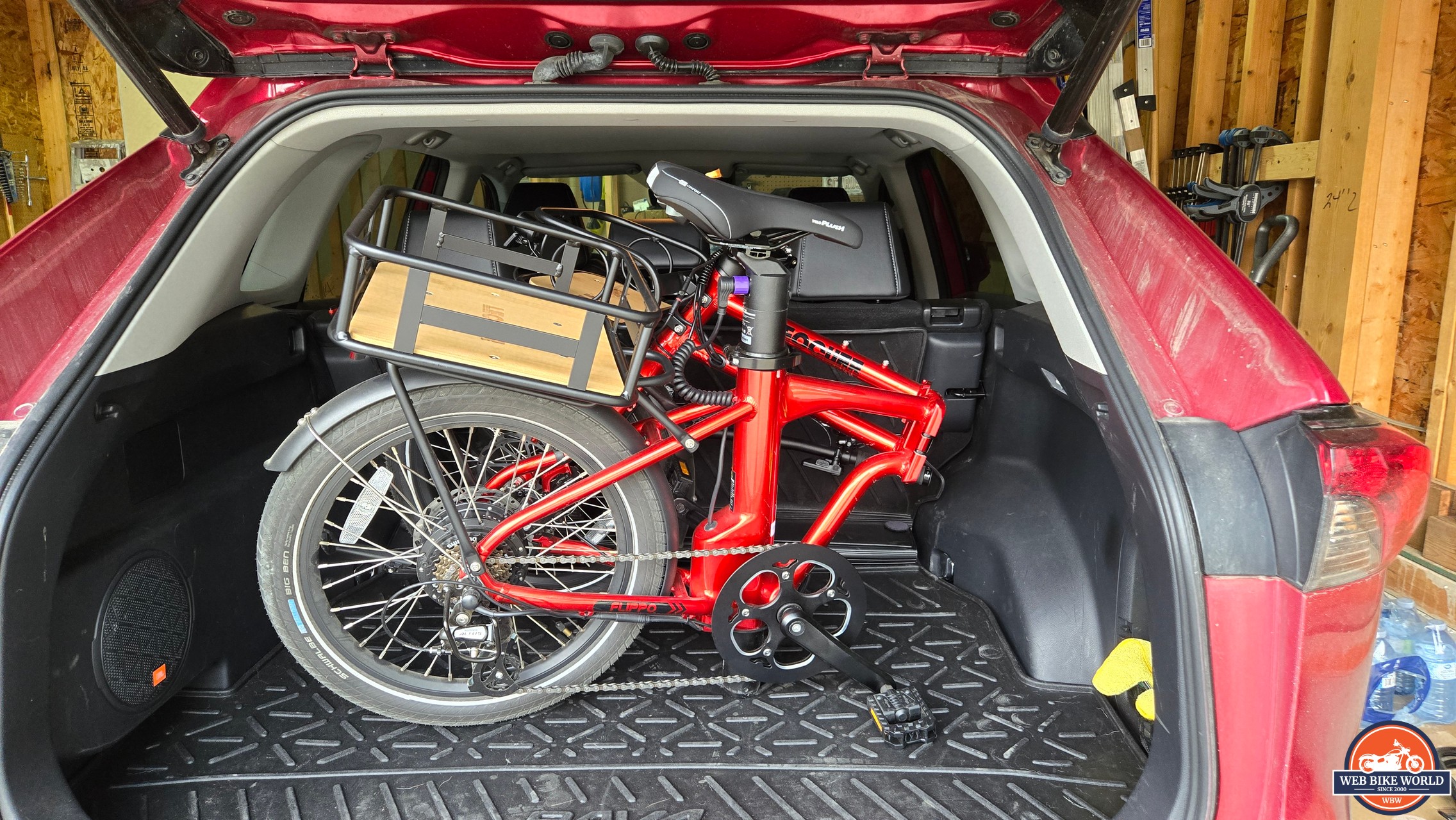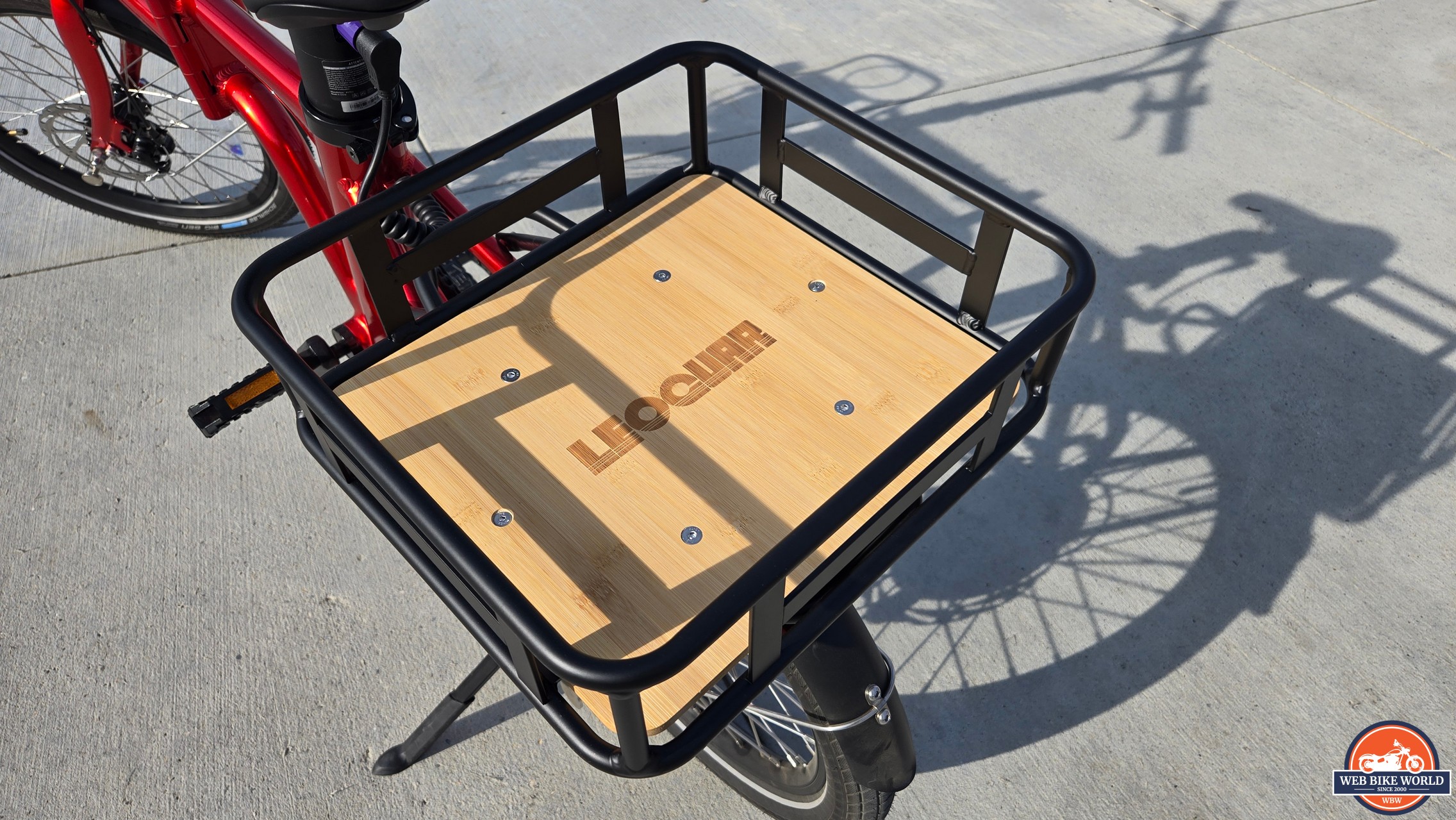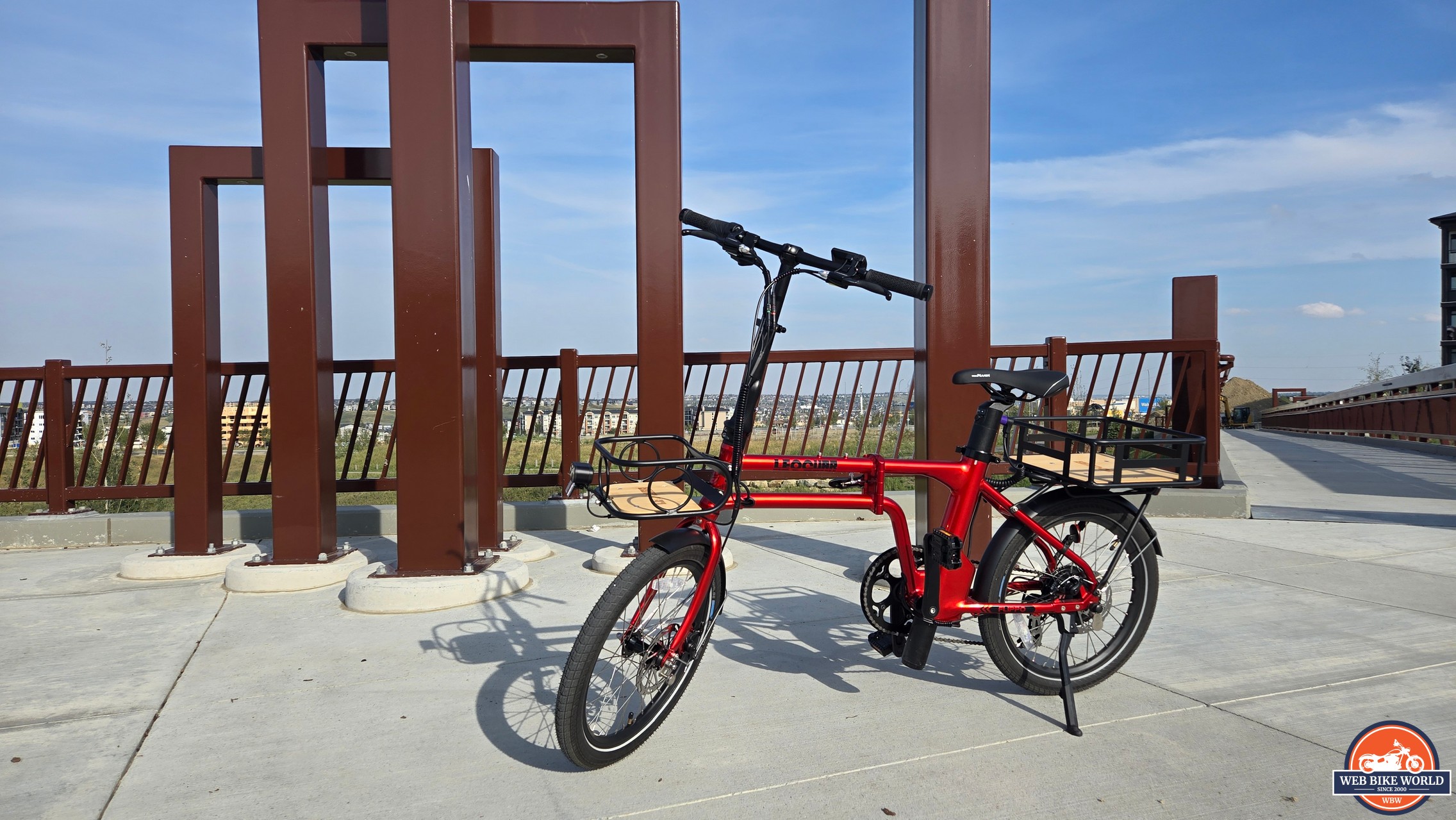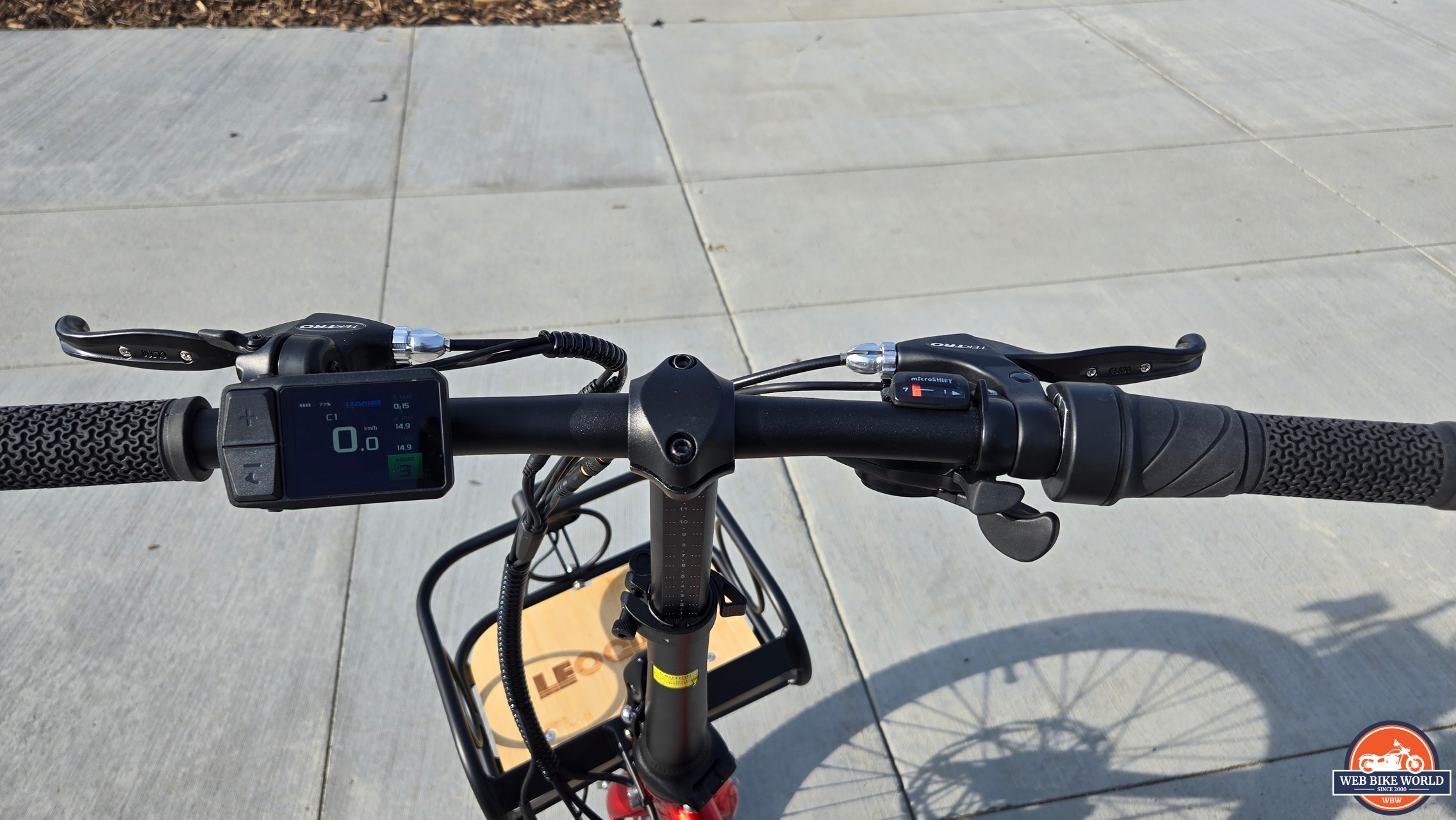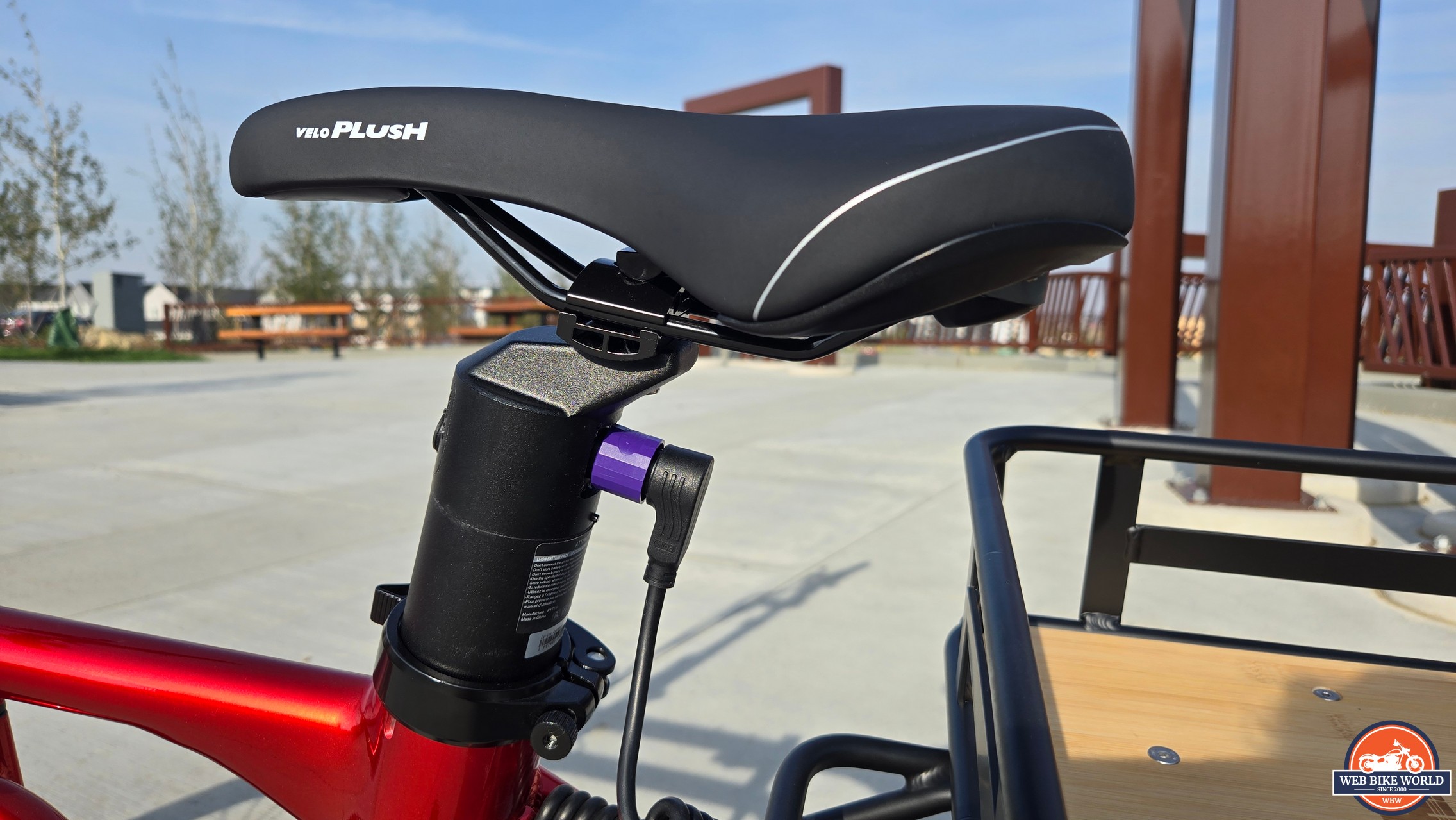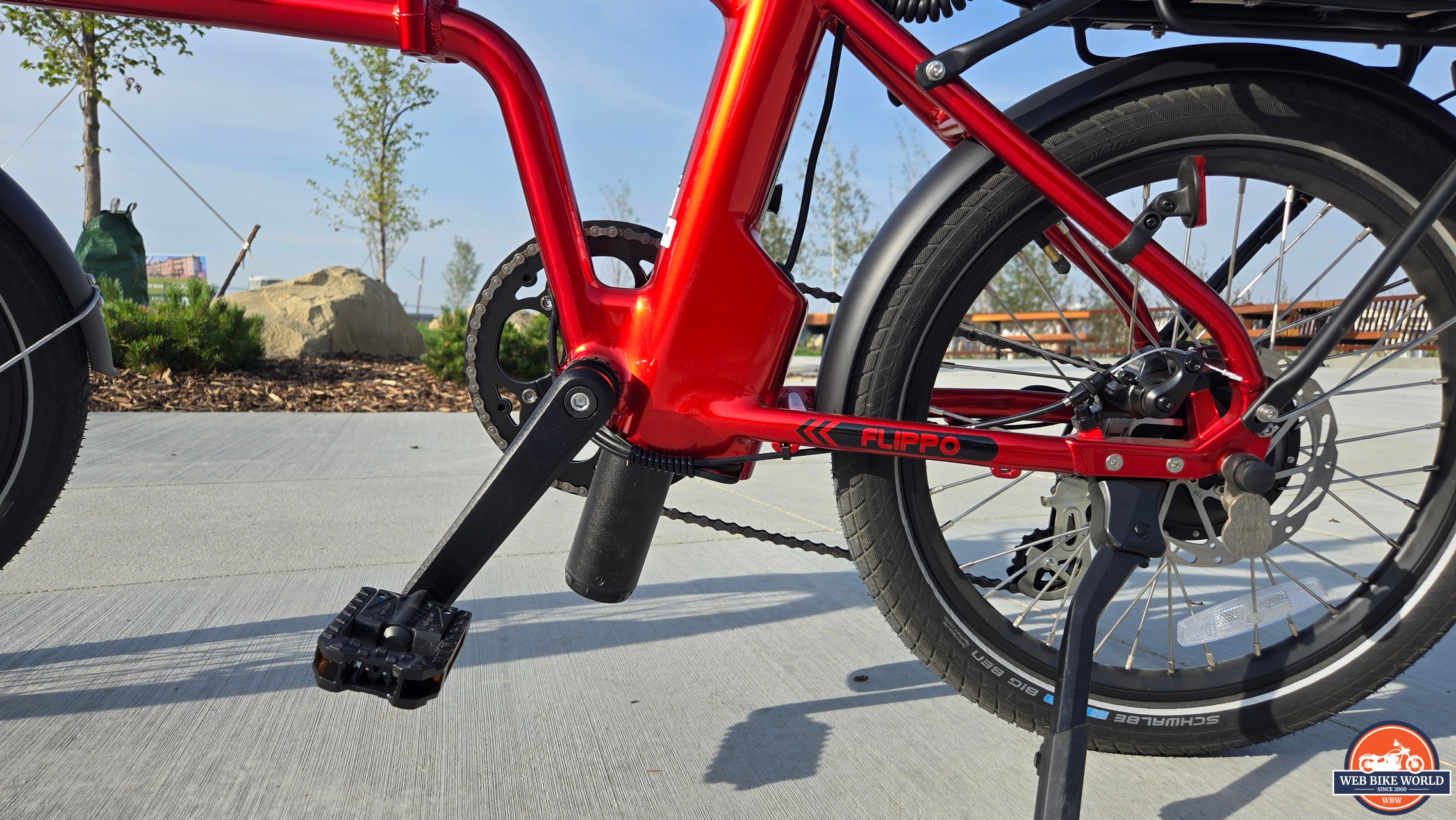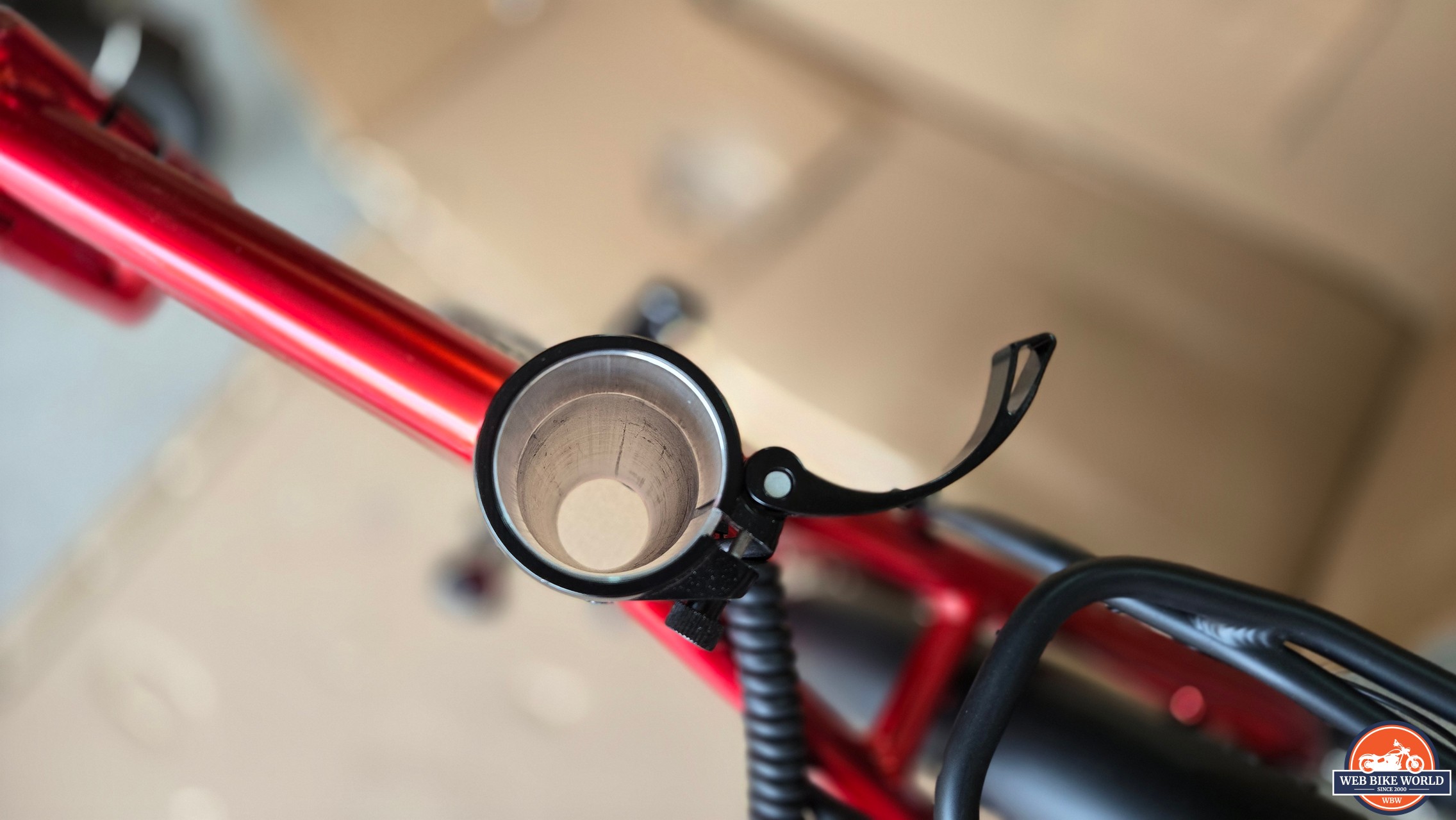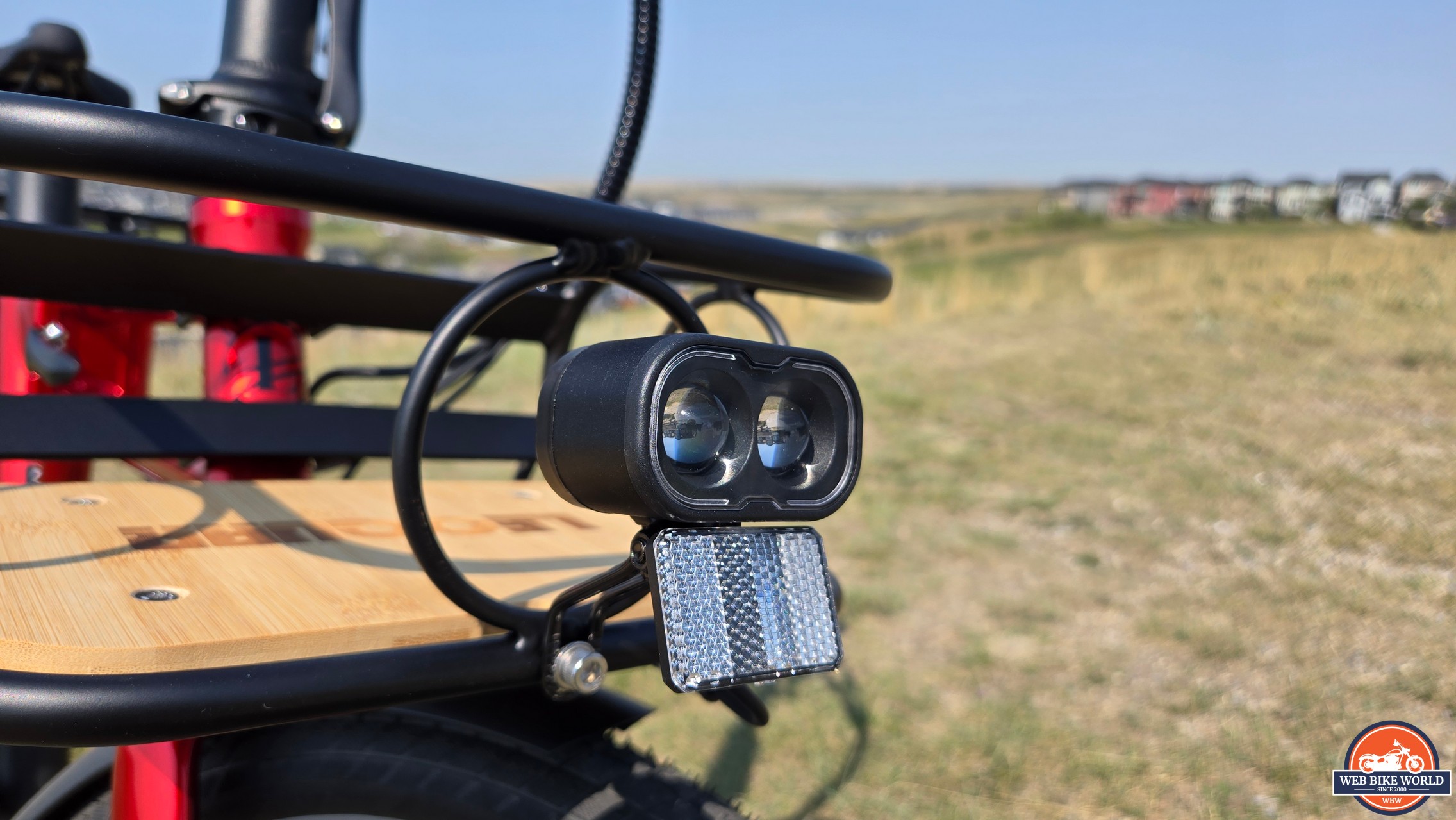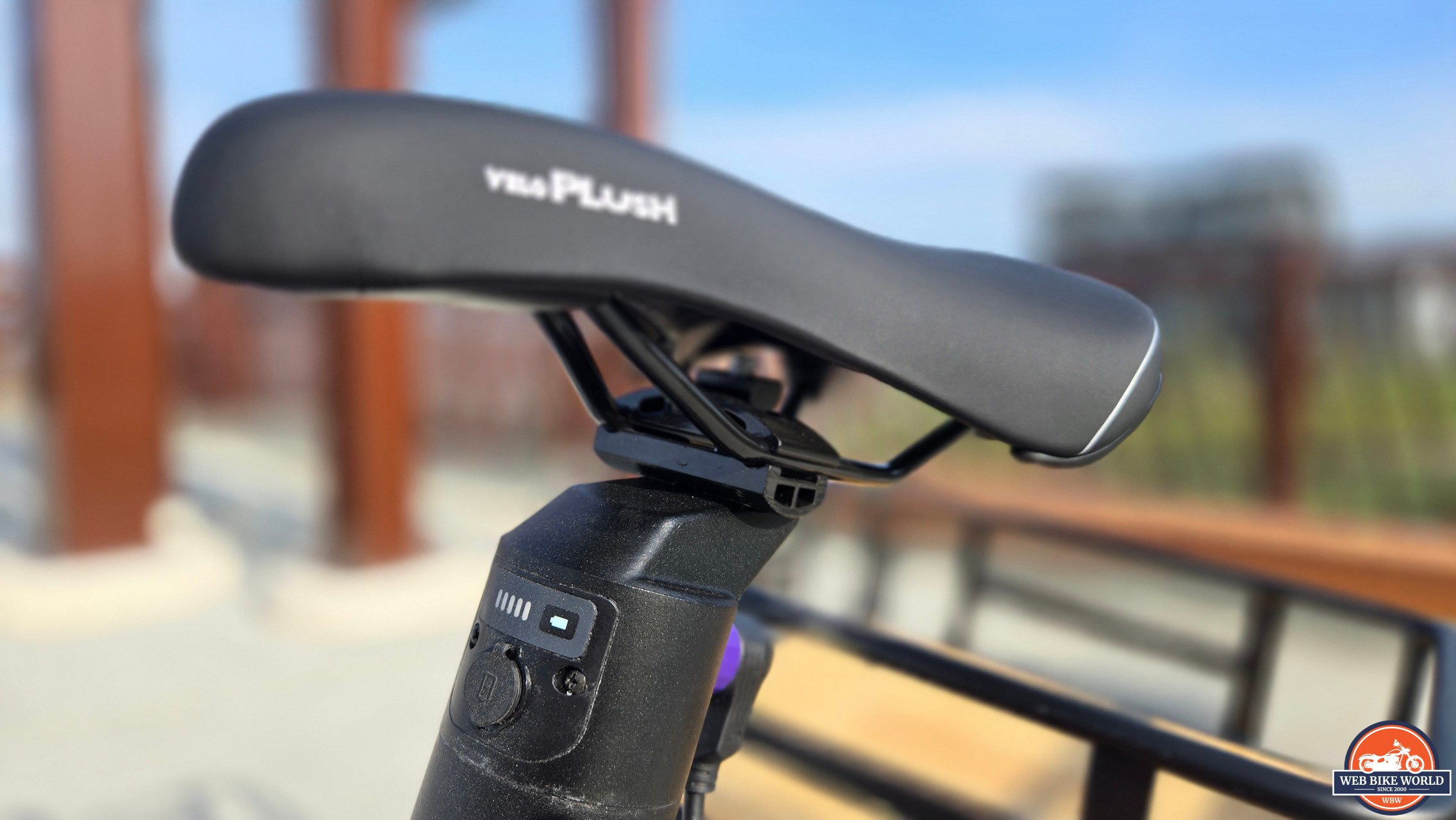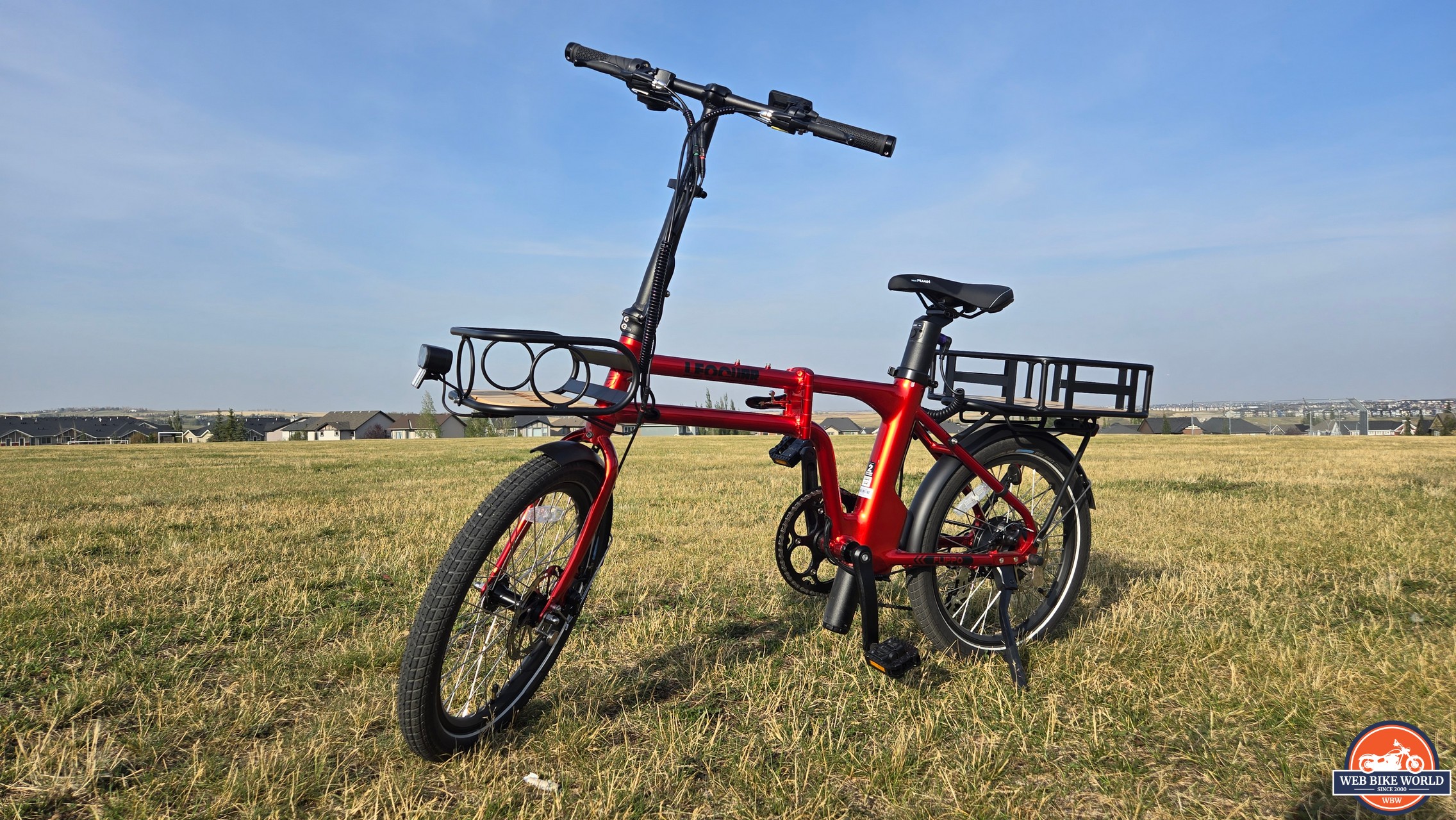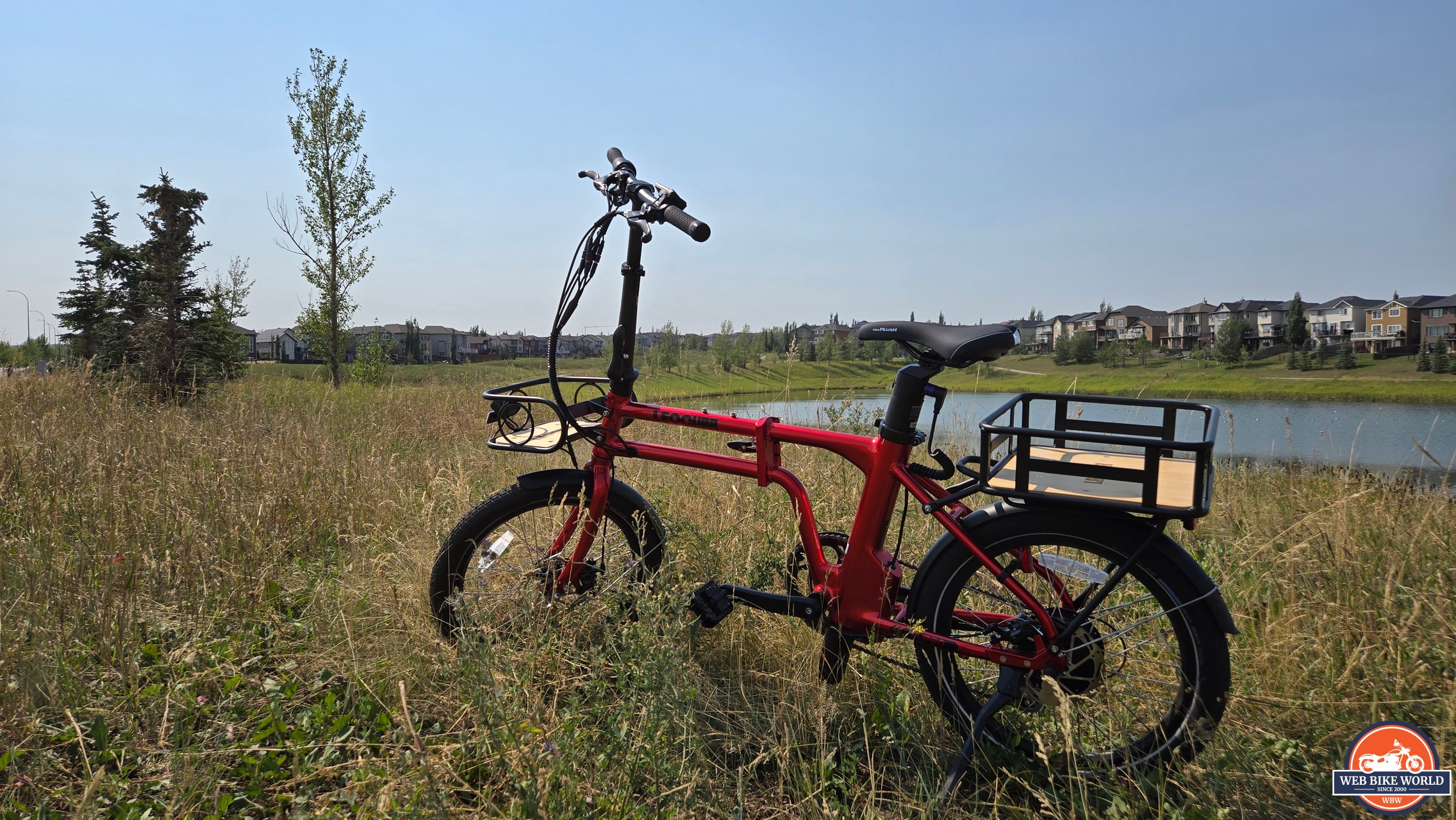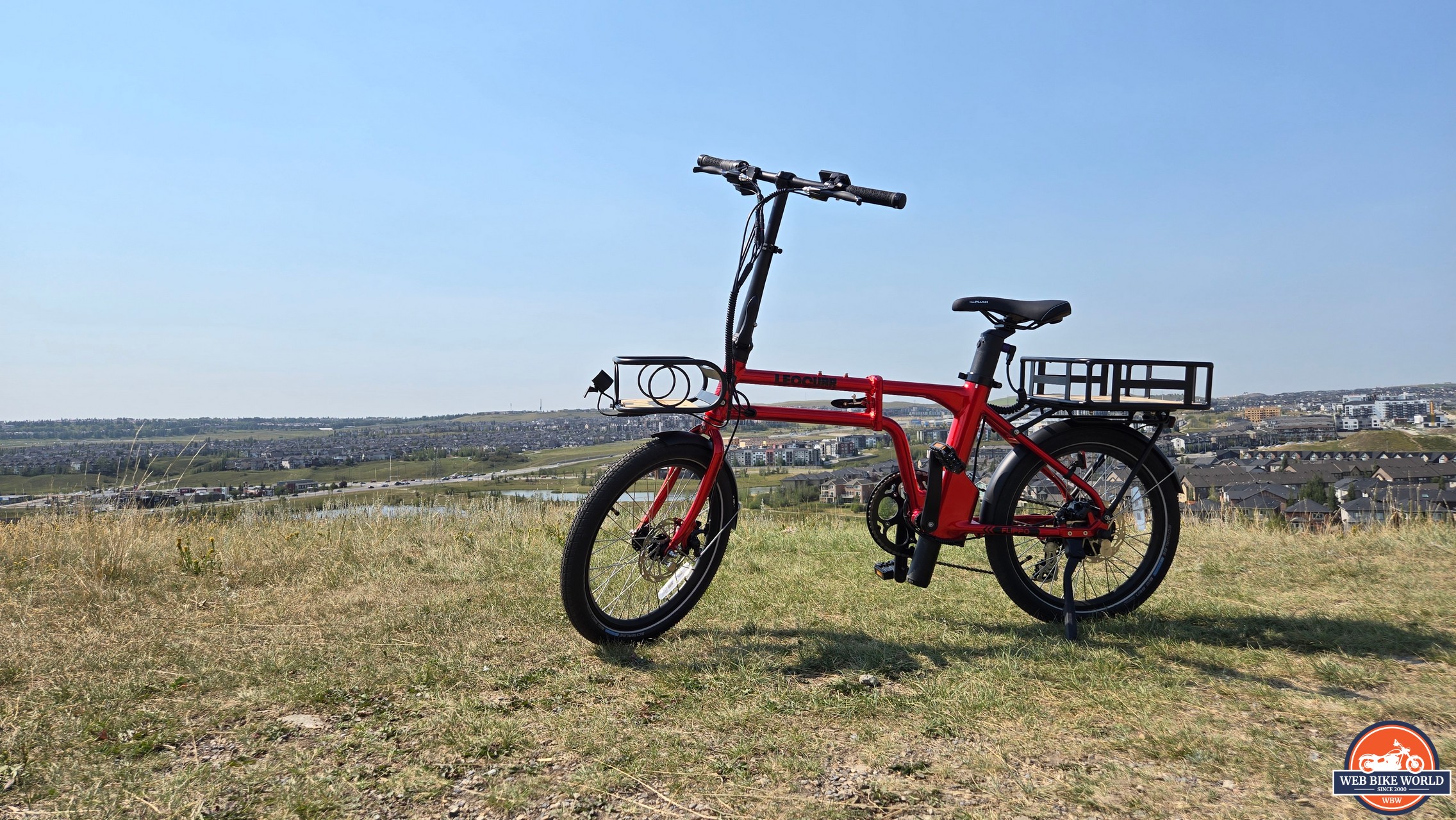Last updated:
Review Summary
- The Leoguar Flippo comes in two variants: Regular and Pro. The Pro model is equipped with a torque sensor and different tires but performance specs remain relatively the same.
- Utilizing 6 PAS levels, the Flippo Pro gives you the best of both worlds. PAS 1-4 use the torque sensor, PAS 5 uses a cadence, and PAS 6 is throttle only.
- It is powered by a 350w rear hub motor, but don’t let it fool you. It has enough pep to move most riders and has a 250lb max payload capacity.
- It uses a seatpost battery design compared to the traditional mounted battery. However, models will not ship with a lockable seat clamp which costs an additional $90.
- Priced at $1399, it’s a bit more expensive than other foldable ebikes in the segment.
- Designed without suspension components, instead relying on the Schwalbe tires to do the cushioning which makes for a bumpy ride on any terrain other than paved roads.
Leoguar: Leopard + Jaguar
Leoguar (pronounced “leg” + “war”) is a newcomer to the ebike scene. Inspired by the precision of a leopard and the power of a jaguar, Leoguar’s philosophy seeks to design e-bikes that offer a balance of speed, strength, and versatility.
Currently, their lineup includes:
- Flippo Pro: A compact folding e-bike perfect for city commutes and easy storage.
- Strider ST and Strider SO: Fat tire e-bikes built to handle rough terrain, from sandy beaches to rugged trails.
- Zephyr ST and Zephyr SO: Beach cruisers that combine style and comfort for laid-back coastal rides.
- Trailblazer (upcoming): A mid-drive e-bike for those seeking ultimate versatility on any terrain.
They sent us a Flippo Pro for review and We were excited to put the Flippo Pro to the test, an e-bike designed for riders who value both portability and performance.. First off, let’s take a look at the bike specs:
Leoguar Flippo Pro Specifications
- Manufacturer website: Leoguar EBikes
- MSRP: $1399 USD / Approx. $1889 CAD
- Motor: 350W (750W peak)
- Torque: 45 Nm peak
- Battery: 48V 10Ah (480Wh) Lithium Ion
- Range: Up to 45 miles
- Pedal Sensor: Hybrid Torque/Cadence, 6 PAS levels
- Top Speed: 20mph
- Derailleur: 7-Speed Shimano
- Brakes: Mechanical disc brake
- Tires: 20” x 2.15”
- Weight: 55lb with battery
- Available colours: Lemon Yellow, Dark Grey, Burgundy, Marine Blue
DISCOUNTS UP TO $500: The Flippo Pro is currently on sale for $1199 USD /$1517 CAD during Leoguar’s Back To School Sale!
Leoguar Flippo Pro Performance
Power and Components
The Flippo comes in two variants: pro and non-pro. The main difference between the two models are in the sensors used.
The Flippo Pro uses a torque sensor, meaning it adjusts the power output based on how hard you pedal, providing a more responsive and natural riding experience. In contrast, the regular Flippo’s cadence sensor delivers a consistent power output when you pedal, regardless of pedal force, and is a suitable choice for those who want a more leisurely ride experience.
The use of a CANbus system allows the Flippo Pro to quickly transfer data between the motor, battery, sensors, and display, which results in immediate adjustments as you ride and no lag in response time.
The Flippo Pro’s 350w rear hub motor is sufficient for most riders and can accommodate up to 250lb of payload. During our testing, it traversed walking paths and light inclines with no issues. For reference, I am a 145lb rider.
Relative to the other fullsize ebikes I own such as the TurboAnt N1 and Cyrusher Kommoda, the Flippo Pro needs more oomph if you’re used to more powerful bikes. I did not feel that PAS 1-3 delivered a significant enough power and was a slower ride than I would have preferred. The output is reasonable given that the Flippo Pro is meant as a commuter bike, but I still spent most of my time on PAS level 4. I do not see myself utilizing PAS 1-3 any more often in the future.
It was not designed with power at the forefront and it does a decent job of moving riders nonetheless.
It’s worth noting that both models have 6 levels of PAS, but the Flippo Pro utilizes a dual sensor system. PAS levels 1 to 4 use the torque sensor, but PAS level 5 engages the cadence sensor if you’re looking for easy additional power. PAS 6 changes the ride to be throttle-only.
All other specifications (battery life, motor power, etc) remain the same between both models.
The components on the Flippo Pro are standard. The rear derailleur is a Shimano ARDTY500D/Altus and is operated by a 7-speed shifter. Stopping power is delivered by Tektro mechanical disc brakes. The brakes required more force than other ebikes I’ve ridden to produce confident stopping power when travelling at higher speeds. Otherwise, the braking system performed admirably but it definitely does not stop on a dime. This is primarily due to the thin profile of the Schwalbe tires resulting in less gripping surface area. However, these tires are extremely responsive when turning with a low rolling resistance that makes riding it nearly effortless on PAS 4 and 5.
Portable and Lightweight
Foldable ebikes are the solution for those who need the convenience of portability and are willing to compromise on the performance aspect.
The Flippo ebike is an obvious choice for anyone who is looking for a portable and lightweight solution. Unless you own a bike rack/hitch or a truck, most ebikes will not easily fit into your average SUV, let alone sedan. In its folded form, the Flippo Pro will easily fit into the back of an SUV (2021 RAV4 in photo for reference).
Compared to fullsize all-terrain ebikes which can weight upwards of 70lb, the Flippo Pro tops out at 55lb with the battery. It literally takes seconds to unfold and was easy to maneuver into our vehicle. The portability makes this bike extremely easy to pack up as it folds up in seconds.
Leoguar graciously included a front and rear rack for installation. The racks are large enough to accommodate backpacks, groceries, and any other items you’d like to carry. The front basket can hold 11lb while the rear will hold up to 55lb of goodies.
The bike racks are fantastic for additional stowing. However, my biggest criticisms of the racks comes down to two things:
- Installation means the bike does not fully fold.
- The installation isn’t as quick as I would like. The rear rack is held on by 4 bolts. The front uses 4 bolts as well but you also need to reposition the front LED headlight to the basket and reconnect wiring. Total install time actually took more than 15 minutes.
As a result, taking the racks off can become a bit of a pain point and you have to decide between the functionality of having extra stowing versus foldability.
Design, Build Quality, and Style
Leoguar sent us a sample model in a gorgeous Burgundy colour. The frame is constructed from high strength 6061 aluminum. Instead of a single central tube body, Leoguar has parallel tubes, presumably to provide more structure rigidity while taking advantage of weight savings.
They advertise the adjustable seat and handlebars as accommodating riders between 5’3” to 6’5”, I am a 5’6” rider and the bike feels like a good size, although I suspect that riders taller than 6’2″ may find this bike to be a bit small.
The front handlebars are limited to vertical adjustments only so riders may need to hunch forward which can be fatiguing over time.
The seatpost battery is a unique feature typically only found on foldable ebikes. Some foldables will opt to have a removable battery mounted behind the seatpost while others are integrated into the frame. The seatpost battery has the added benefit of strategically using space but the long profile means that it has to be locked in above the gear crankset to prevent potential damage if you ever bottom out the bike going over road obstacles.
Most ebikes come 95% assembled, even more so with the foldable so all you need to do is attach the handlebar, tighten all your nuts and bolts, inflate your tires to the proper PSI and you’re all set.
Lastly, there is no way to lock the battery so all someone needs to do is unlatch the seat and take both. Double whammy. You can purchase a lock clamp for $90 which is pricey considering it’s closer to a $40 part.
However, both models are equipped with a startup password feature accessible via the controller and prevents unauthorized use of the bike.
Best For Paved Roads
As one might suspect from a foldable ebike, the Flippo Pro needed to forego elements such as fork air suspension, opting for 20” x 2.15” Schwalbe tires to do the job. As much as air-filled tires cushion bumps, it’s not enough.
The design decision did not translate to real-life usage, especially when combined with the Velo seat which is not as comfortable as a plushy cruiser seat. Going over bumps sent shockwaves up the rigid steel fork and resulted in a rough ride. The Flippo Pro was best experienced on flat pavement and walking paths, hence its designation as a commuter bike.
Leoguar specifically designed this bike for maximum weight savings, so if you’re looking for something that has more oomph, a fat tire ebike might be a suitable alternative. Given the thin profile of the tires, the Flippo Pro is very maneuverable and responsive.
Easy to Charge with Plenty Of Range
The Flippo Pro yielded around 37mi / 60km on a single charge. It was exclusively pavement riding (most comfortable) as it does not perform well on gravel and uneven paths. The advertised max range is up to 45 mi / 72km so we felt that this was not an exaggerated claim.
Due to its light weight and slim tires, the ebike can be ridden like a regular bike with way less drag compared to fat tire ebikes.
A normal full charge takes around 3 to 4 hours so commuters can bring this into an office and have a quick charge, even for a half day of work. Charging is also very convenient as the seatpost battery detaches from the plug-in underneath the Velo seat, so you can bring the battery inside instead of charging it on the bike. This makes the most sense as the battery cannot be locked anyway.
How’s The Value For Money?
In my opinion, the Flippo Pro has a below-average value proposition. Given the standard components used (i.e., Shimano 7-speed, etc.), it means that part replacement will be simple but it may not be enough to justify the $1400 USD price point.
It’s not the most affordable foldable ebike on the market, especially compared to bigger brands such as KBO and their foldable fat tire ebike, and even their newly released K2 foldable ebike which we’ll be reviewing later this month. Both of those bikes come in under the $800 mark, nearly half of what the Flippo Pro costs. Other examples include Biktrix’s full suspension foldable ebike coming in at $1300.
That said, a fat tire ebike is not apples to apples, but it’s also not too far off.
The Flippo Pro’s torque sensor and seatpost battery design is a welcome addition to the overall utility but seeing as the regular Flippo still costs $1399, the price difference is significant when compared to other offerings on the market.
In a market that’s becoming increasingly saturated every month, the selection is staggering. When you pair this with the exceedingly common components being used in nearly every single ODM brand bike, conscientious buyers will naturally gravitate towards lower pricing.
The Flippo Pro is a gorgeous bike that does more than meets the eye. The 350w motor is enough for most riders but a lack of suspension leaves a lot on the table in terms of overall comfort. In terms of pricing, it has not set itself apart from competitors but long-term use will also determine its quality.
2024 Leoguar Flippo Pro Folding Ebike Review
Review Summary
The Leoguar Flippo Pro is a foldable ebike designed for extreme portability. Despite its compact size, the Flippo Pro can put out a decent amount of power with its 350w rear hub motor. For those seeking a foldable bike perfect for a stow-and-go lifestyle, this model is worth considering.
Pros
Compact, foldable design ideal for commuters
Foldable design allows for great portability
Will fit into nearly all SUVs and even some sedans
Aesthetically pleasing design and solid tube frame construction
Very lightweight, responsive, and easy to maneuver
The seatpost battery design not only balances the bike but also saves space
Cons
Seatpost battery design limits ground clearance
No way to lock the battery leaves it vulnerable to theft. $90 for a lockable seat clamp.
Heavy at 77-lbsVelo seat is thin for a bike with no suspension; a plushy cruiser seat would offer more comfort
Bike loses some foldability once you install both front/rear racks


